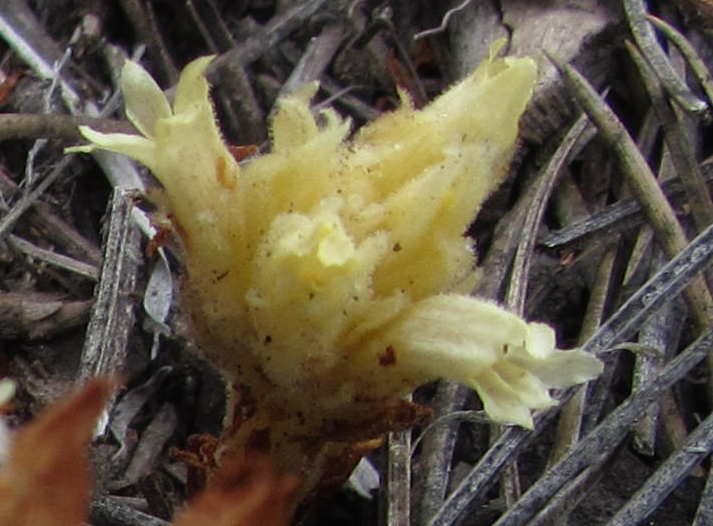A few weeks ago, Debby Hyman, Christine Cloyd, and Rozelle Wright took a Gentle Walk in Bayo Canyon. Rozelle found a plant she didn’t recognize, took pictures, and, after some research, ran it by Chick Keller. He gave the stock answer based on his knowledge of the plants found in our area. Rozelle compared her find with his suggestion, but it did not seem to match the plant he named. Determined to identify the unusual plant, she asked Chick to take another look at her photos. When he did, he realized it was something new and ran it past a colleague. Rozelle’s photos revealed a plant previously unknown in Los Alamos county. Her finding marks the first record of the Orobanche corymbosum or flat top broomrape in Los Alamos county. In addition, it is only the third sighting of one in New Mexico, and the expert thinks it may hold the honor of being the farthest east record.
The Gentle Walks philosophy of meandering and wondering is helping to increase our understanding of our natural history. Chick is particularly happy, since it contributes to his goal of finding 1000 different species of plants in Los Alamos county.



Please note that the common name is “flat top broomrape” (not “broomrake”). (It’s in the same family as another saprophyte called Orobanche fasciculata, or fascicled broomrape.)
I also found it in my yard in White Rock a few days later.
Thank you for the important correction. The common name is now listed as “flat top broomrape” in the post. I will be sure to double check all names prior to future posts.
This plant is a species of Orobanche, but probably not Orobanche corymbosa. Orobanche corymbosa has been collected in San Juan County, NM. Please note the pointed corolla lobes on the plants in the photo. O. corymbosa has rounded or sometimes notched (emarginate) apices for the corolla lobes. Other species in N.M that have pointed corolla lobes are O. arozonica (sp. nov) and O. riparia (very rare). The plants shown are unusual in that they have no purple anthocianyn pigmentation. Yellow plants are a rare occur occurrence in some species of Orobanche. It would be helpful to know the host plant since these parasites are sometime attached to a specific host.
thanks for the note. The specimen has been sent off to an Orobanche expert (forget his name) for annotation. I look forward to seeing what is said.
btw a second collection was made the same month but in White Rock (actually La Senda).
Strange.
wonder of the rains brought these out.
Host is hard to tell. Plants were under ponderosa with little adjacent vegetation
Just wondering to whom you sent your specimen, and if you have a response, esp. since I am one of the few people in the USA who work on this family.